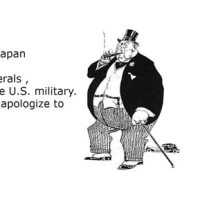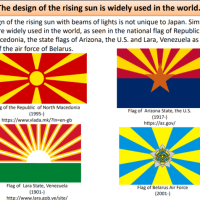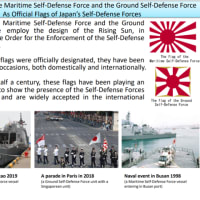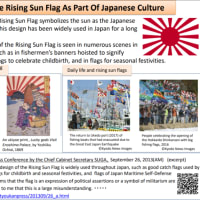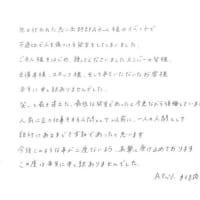そういえば、先ほどの記事にでてきた言葉でLife imitating art
というのがある。これ調べてみると面白いね。
芸術論で、芸術というのは、模倣、Mimesisだという説があるわけですね。
プラトンなんかによれば、真実は、イデアで、現実はその模倣、芸術は、その現実の模倣だ、というわけですね。
アリストテレスなんかによれば、芸術は現実の模倣であるだけでなく、現実のなかの、永遠なるもの、完璧なもの写しとっている、というわけですね。
ところが、オスカーワイルドあたりだと、芸術が現実の模倣なのではなく、逆に、
Life imitating art
From Wikipedia,
現実が芸術の模倣なんだ、というわけですね。
人生の目的は、その表現を見つけることであり、芸術は、生命が自己実現する美的な表現形式を提供するのだ、と。
ロンドンの霧は自然にそこにあった、というより、詩や絵画が際立たせることによって、そこに存在するようになったのである、と。というより、芸術家が発明したんだ、とまで言っているようですが、それは、しかし、ちと極端かな、と。なかったものが、発明によって作られた、というより、もやもやとして、何ものでもなかったものが、芸術的視点を与えられて、美的・・あるいは、とにかく、スゲー何かになったー表現されて形を与えられるようになった、というべきであろう。
いずれにせよ、現実と芸術との関係というのが、芸術は、作者や鑑賞者が共感し、のめりこめるように、”こうである”現実との類似性も維持していると同時に、視覚経験や聴覚経験、あるいは、現実が”こうあるべき”、”こうあったらすごいな”、といった、(息をのむような)理想や欲望を表現しており、しかも、その芸術によって現実に対する新たな視点・地平が開かれるのでしょうね。
そして、自分が共感できて、かつ、もやもやした自分の状況に形を与え、また、自分が求める理想や欲望が反映され、あるいは表現されている作品は高く評価され、そうでないものは、あまり評価されない、のかなあ、と。
というのがある。これ調べてみると面白いね。
芸術論で、芸術というのは、模倣、Mimesisだという説があるわけですね。
In developing this in Book X, Plato told of Socrates' metaphor of the three beds: one bed exists as an idea made by God (the Platonic ideal); one is made by the carpenter, in imitation of God's idea; one is made by the artist in imitation of the carpenter's.[4]
So the artist's bed is twice removed from the truth.
プラトンなんかによれば、真実は、イデアで、現実はその模倣、芸術は、その現実の模倣だ、というわけですね。
Similar to Plato's writings about mimesis, Aristotle also defined mimesis as the perfection and imitation of nature. Art is not only imitation but also the use of mathematical ideas and symmetry in the search for the perfect, the timeless, and contrasting being with becoming. Nature is full of change, decay, and cycles, but art can also search for what is everlasting and the first causes of natural phenomena
アリストテレスなんかによれば、芸術は現実の模倣であるだけでなく、現実のなかの、永遠なるもの、完璧なもの写しとっている、というわけですね。
ところが、オスカーワイルドあたりだと、芸術が現実の模倣なのではなく、逆に、
Life imitating art
From Wikipedia,
Anti-mimesis is a philosophical position that holds the direct opposite of Aristotelian mimesis. Its most notable proponent is Oscar Wilde, who opined in his 1889 essay The Decay of Lying that, "Life imitates Art far more than Art imitates Life". In the essay, written as a Platonic dialogue, Wilde holds that anti-mimesis "results not merely from Life's imitative instinct, but from the fact that the self-conscious aim of Life is to find expression, and that Art offers it certain beautiful forms through which it may realise that energy.".[1][2]
What is found in life and nature is not what is really there, but is that which artists have taught people to find there, through art. As in an example posited by Wilde, although there has been fog in London for centuries, one notices the beauty and wonder of the fog because "poets and painters have taught the loveliness of such effects...They did not exist till Art had invented them.".[1]
現実が芸術の模倣なんだ、というわけですね。
人生の目的は、その表現を見つけることであり、芸術は、生命が自己実現する美的な表現形式を提供するのだ、と。
ロンドンの霧は自然にそこにあった、というより、詩や絵画が際立たせることによって、そこに存在するようになったのである、と。というより、芸術家が発明したんだ、とまで言っているようですが、それは、しかし、ちと極端かな、と。なかったものが、発明によって作られた、というより、もやもやとして、何ものでもなかったものが、芸術的視点を与えられて、美的・・あるいは、とにかく、スゲー何かになったー表現されて形を与えられるようになった、というべきであろう。
いずれにせよ、現実と芸術との関係というのが、芸術は、作者や鑑賞者が共感し、のめりこめるように、”こうである”現実との類似性も維持していると同時に、視覚経験や聴覚経験、あるいは、現実が”こうあるべき”、”こうあったらすごいな”、といった、(息をのむような)理想や欲望を表現しており、しかも、その芸術によって現実に対する新たな視点・地平が開かれるのでしょうね。
そして、自分が共感できて、かつ、もやもやした自分の状況に形を与え、また、自分が求める理想や欲望が反映され、あるいは表現されている作品は高く評価され、そうでないものは、あまり評価されない、のかなあ、と。











